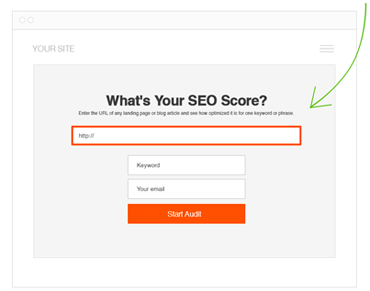How To Combine PPC and SEO Synergies
SEO and Google Search Ads have so many synergies and data that can be utilized to drive growth for both marketing strategies. However, this data isn’t always shared to support the other program.
There is a reason for this, each marketing strategy requires a specialized skill set and often is managed by separate individuals and teams (SEOs and Paid Search Marketers).

Efficiencies Between the Two Channels
Both parties will benefit when we can get paid search and SEO together to share critical insights. Within this blog post, I’ll share several synergies search engine marketers can leverage to drive more results through Google just by sharing a few pieces of data.
Google Search Console for Google Search Keyword Mining
Often when advertisers decide to start adverting with Google Ads, the Google Search Ads marketer will do their research of keywords to target, via Google Keyword Planner Tool. What I find is they rarely jump into Google Search Console, which holds a treasure trove of awesome search queries to target through paid ads potentially.
Google Search Console will report the exact search queries users are typing before visiting your website.
I strongly recommend that the search ads manager get access to Google Search Console to identify highly relevant keywords to target via Paid, especially for keywords with high intent but relatively low organic positioning.
Below is an example screenshot from Google Search Console, where you can potentially identify search queries to target through Paid Search. I recommend revisiting these reports every few months to see if there are any keywords in your PPC program you can expand upon.
This report also benefits new products/services, where you may not know how users search. Additionally, as we migrate more into voice search and search queries are getting longer (as users are speaking the search vs. typing), this report will give insights into how users search so you can maintain a presence.

Google Search Ads Keyword Data for SEO Targeting
With Google Search Ads, you can quickly test keywords with a flip switch. If you’re unsure which keywords to optimize your site, consider testing a variety of keywords through Google Search Ads. Put a sufficient budget against this test (for example: drive at least 100 – 150 clicks per keyword theme), and see how each of these themes of keywords perform.
You’ll likely find some keywords that will have a high conversion rate. Once you’ve identified these keywords, pass this to the SEO marketer for optimization. This way, you’re focusing on search queries with the best chance to drive the business outcome vs. keywords that can drive traffic but not as many conversions.
This might be a worthwhile investment as SEO takes time. Changes you make to your site may not have an impact until 4-8 weeks down the road. Since SEO is time-consuming, it’s best to focus on the specific search queries you want to optimize for, which could save you a considerable amount of time down the road.
Ad Copy Testing for Meta Descriptions
To drive higher click-through rates (CTRs) from your organic traffic, you’ll want to customize your meta description to showcase your value and include a call to action to pique the users’ interest.
If you don’t add a meta description (screenshot below), Google will insert language from the landing page. This is OK, but even better if you can customize it to include language you know will resonate with your audience.

Instead of guessing which meta copy you should have in your meta description, leverage your Google ad performance reporting to drive the best click-through rate. I’ll explain how:
Within Google Ads, open up a recent ad report (90 days of data), and look at your top-performing ads. You’ll likely identify the ad copy that seems to resonate and yield the highest click-through rates. Once you’ve identified the common messaging driving a high click-through rate, incorporate this within your organic meta descriptions. For example, maybe it’s an offer, main selling proposition, or benefit. Whatever language seems to work, let’s use that for SEO.
The benefit of this is more organic traffic from higher click-through rates. Beyond this, this could increase your organic ranking on Google over time. If Google sees that your organic listings are experiencing a strong CTR relative to your competition, it may continue to move you up the ranking, as you’re showing value to the end user through a strong click-through rate.
Cutting Ad Spend
While Google Search ads work very well, you need to be mindful of your organic ranking for specific keywords, as there could be keywords where you might be paying for traffic but may not necessarily need to.
For example, many advertisers pay for traffic on their branded terms. This often makes sense, especially if competitors bid on your brand. However, suppose no competitors are bidding on your brand, and you own the top organic positioning. In that case, you should save this PPC (pay-per-click) budget and reallocate to keywords with a relatively low organic presence.
How About You?
The above are some of the available PPC – SEO synergies that we find value in, but I would love to hear from you! Comment below on other PPC – SEO synergies that you typically partake in.
2 responses to “How To Combine PPC and SEO Synergies”
Leave a Reply
You must be logged in to post a comment.
 November 13, 2019
November 13, 2019



[…] learn of the four strategies below, visit my blog post on How to Combine PPC and SEO Synergies at SEO Mechanic. Within this blog post I’ll break […]
That was a great and comprehensive article…all the tips enumerated and explained will be helpful for those who are wise enough to tap from it. Any business nowadays without social media signals and presence may not make it to the outermost, and investment too is part of the key to success in business. Keep up the good work